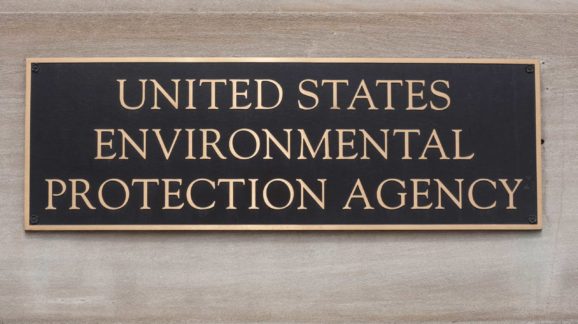Behind Biden’s EPA Power Grab
The Environmental Protection Agency had its way with both the Clean Air Act and the U.S. Constitution for decades. The Supreme Court’s decision Thursday in West Virginia v. EPA may be the beginning of the end of this baleful era. It closes the window on sweeping climate action by federal agencies without a congressional mandate.
In a 6-3 decision by Chief Justice John Roberts, the court held that the Clean Air Act doesn’t authorize the Clean Power Plan, or CPP, through which the Obama administration sought to force America’s electricity sector to switch to renewable sources. The plan would limit each state’s total allowable greenhouse gas-emissions under the banner of “performance standards” for power plants. That was the strategy the EPA had pursued for nearly a decade as its best option for imposing climate regulations by unilateral executive action.
The EPA’s attempt to impose such a scheme on states was particularly bold because Congress had just declined to enact a similar scheme. After the 2008 election, Democrats introduced the Waxman-Markey bill, a sweeping cap-and-trade scheme to reduce carbon emissions dramatically. Even with Democratic supermajorities in both houses, Congress failed to pass the bill.
After his party lost the House in 2010 President Obama turned to the EPA, which in 2015 promulgated the Clean Power Plan. The basic idea of the CPP was to pressure states into shutting down coal and (eventually) natural-gas plants and switch to renewable electricity sources. The agency resorted to an obscure provision of the original Clean Air Act that lay largely dormant for decades. It empowers the EPA to designate a “best system of emissions reduction,” or BSER, for existing facilities. The provision had been used only a handful of times, mostly for solid-waste incinerators, to reduce emissions “inside the fence line” of the facility itself.
The EPA decided that BSERs could extend beyond the fence line to the whole economy. The CPP would have imposed costly technological requirements within its purview, but also imposed standards that would force states to switch to natural gas and eventually renewables. The agency even planned to adopt nationwide standards on how and when you are allowed to use electricity in your own house.
There were a host of statutory and constitutional problems with this scheme, and the Supreme Court stayed it in 2016. In 2019, the Trump administration replaced it with the Affordable Clean Energy rule. That rule held to the traditional “inside the fence line” approach and accordingly focused on modest emissions improvements at coal plants. On the last day of Mr. Trump’s presidency, however, the powerful U.S. Circuit Court of Appeals for the District of Columbia vacated the Trump rule.
Normally, that would automatically reinstate the old rule, but the Biden administration immediately asked the D.C. Circuit to hold back on reinstating the CPP while it contemplated a new rule.
States led by West Virginia appealed to the Supreme Court, which decided yesterday that the EPA lacked the statutory authority for the CPP. The justices held that the EPA’s sudden discovery of a “transformative expansion” in its regulatory authority based on an obscure provision of “a long-extant statute” raised a “major question” about the agency’s authority, requiring Congress to speak with far greater clarity than it did in the statute. The EPA’s expansive definition of BSER, the court held, presented every kind of major question that had previously drawn the justices’ skepticism: It entailed impacts of great political significance, sought to regulate a significant portion of the American economy, and intruded into areas that are the province of state law and another agency (the Federal Energy Regulatory Commission).
One issue the court unfortunately didn’t focus on was the federal coercion of state governments. The EPA normally has the power to do itself whatever it’s asking states to do. But in the CPP, even the EPA admitted that it has no statutory authority to impose directly the measures it was asking states to take. It got around that by using its power to shut down coal plants as leverage to seize control of state policy in areas far beyond its jurisdiction.
The decision leaves the EPA with one narrow path forward for sweeping climate action, namely the adoption of national ambient air quality standards for carbon dioxide. That would put the agency in the absurd position of setting the right level for a natural component of the Earth’s atmosphere, which states either would automatically attain or could never attain, leading to a train wreck of state implementation plans under the act. That in turn would force the Supreme Court to examine an unheralded federal expansion of its own creation, namely its 2007 holding in Massachusetts v. EPA, which held that carbon dioxide is a pollutant under the Clean Air Act. That made the mess the court finally began to clean up in its decision Thursday.
In his concurrence, Justice Neil Gorsuch heralded the decision’s historic import: “When Congress seems slow to solve problems, it may be only natural that those in the Executive Branch might seek to take matters into their own hands. But the Constitution does not authorize agencies to use pen-and-phone regulations as substitutes for laws passed by the people’s representatives.”
Read the full article here.
